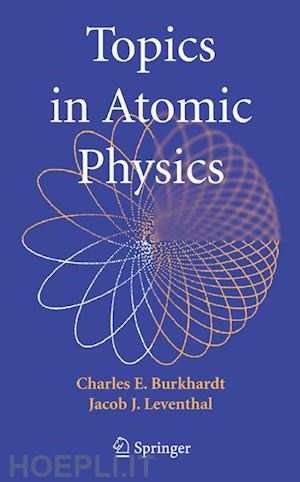
Questo prodotto usufruisce delle SPEDIZIONI GRATIS
selezionando l'opzione Corriere Veloce in fase di ordine.
Pagabile anche con Carta della cultura giovani e del merito, 18App Bonus Cultura e Carta del Docente
Charles E. Burkhardt earned his Ph.D. in experimental atomic physics at Washington University in St. Louis in 1985. He is Professor of Physics at Florissant Valley Community College in St. Louis. Jacob J. Leventhal earned his Ph.D. in experimental atomic physics at the University of Florida in 1965. He is Curators' Professor at the University of Missouri – St. Louis. They have collaborated on experimental atomic physics since 1980, publishing numerous papers in research and teaching journals.











Il sito utilizza cookie ed altri strumenti di tracciamento che raccolgono informazioni dal dispositivo dell’utente. Oltre ai cookie tecnici ed analitici aggregati, strettamente necessari per il funzionamento di questo sito web, previo consenso dell’utente possono essere installati cookie di profilazione e marketing e cookie dei social media. Cliccando su “Accetto tutti i cookie” saranno attivate tutte le categorie di cookie. Per accettare solo deterninate categorie di cookie, cliccare invece su “Impostazioni cookie”. Chiudendo il banner o continuando a navigare saranno installati solo cookie tecnici. Per maggiori dettagli, consultare la Cookie Policy.